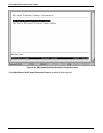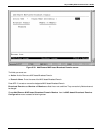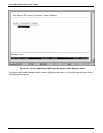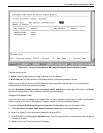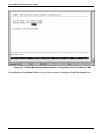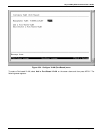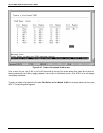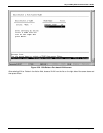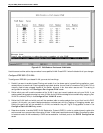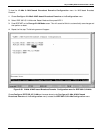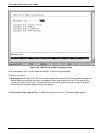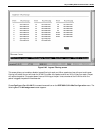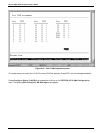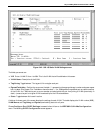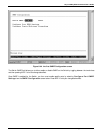
24-port NWay Ethernet Switch User’s Guide
Using the Console Interface 65
Figure 6-37. Edit/Delete a Port-based VLAN table
Use this screen to either add or drop a member from a specified VLAN. Press APPLY when finished with all your changes.
Configure IEEE 802.1Q VLANs
To configure an IEEE 802.1 port-based VLAN, you must do three things:
1. Decide if you want to enable Ingress Filtering and enable it on the chosen ports. Ingress filtering applied on a port
causes the port to examine all incoming packets and check whether the port itself is a member of the VLAN. This is
normally used to keep untagged frames off the Switch, although it can have other uses as well. This setting is
configurable for each port in the Configure Port Ingress Filter screen.
2. Define which ports will be active members of the VLAN. A port can transmit packets onto only one VLAN. It can
receive packets (be a passive member) on many VLANs. Active VLANs are designations are defined by assigning Port
VLAN ID numbers (PVIDs) in the Configure Port VLAN ID screen.
3. Define the VLAN itself and which ports will be members (able to receive packets from a port that has this PVID
number). At this point, you need to designate whether a member port will be a Tagging or Untagging member port.
Defining the ports that will be members of a VLAN, and whether they will Tag or Untag packets is done in the
Configure Static VLAN Entry screen.
4. Determine whether to enable GARP VLAN Registration Protocol (GVRP) in order to update dynamic registration
entries as well as to communicate information to other VLAN-aware workstations and bridges, thus allowing orders
to issue and revoke VLAN membership. GVRP can be enabled for individual ports on the GVRP Configuration
screen.



